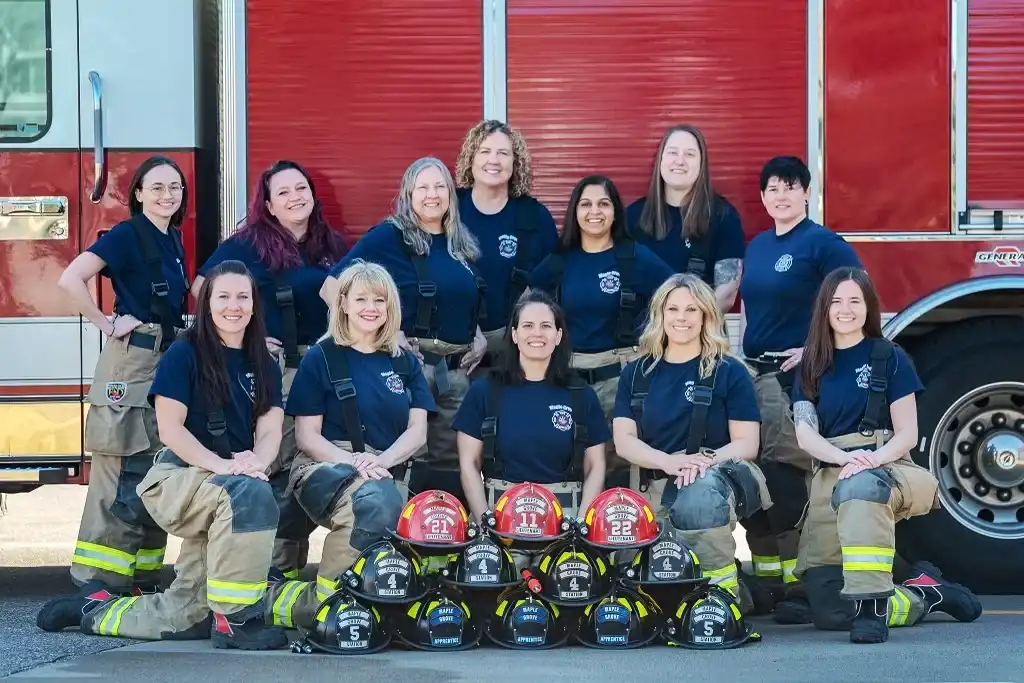The firefighting profession has traditionally been male-dominated, but over the years, more and more women have broken barriers and proven that they are more than capable of performing the demanding job. Becoming a female firefighter is a rewarding yet challenging career choice that requires physical fitness, mental toughness, and dedication. For women who are passionate about serving their community, saving lives, and working in a dynamic and fast-paced environment, firefighting offers an exciting and fulfilling career.
In this comprehensive guide, we’ll break down what it takes to become a female firefighter, from the qualifications and physical requirements to the training and support you can expect along the way.
1. The Path to Becoming a Firefighter: Basic Requirements
Becoming a firefighter, whether male or female, requires meeting certain qualifications. However, the journey can be uniquely rewarding for women who are determined to succeed. Here are the basic steps to become a female firefighter:
A. Age and Education Requirements
-
Age: Most fire departments require applicants to be at least 18 years old, but some departments may have an upper age limit (usually between 28 and 35 years old) for applicants.
-
Education: A high school diploma or equivalent (GED) is typically the minimum educational requirement. However, having a background in science, physical education, or any related field can be beneficial. Many fire departments prefer candidates with college courses or certifications in areas like fire science or emergency medical services.
B. Valid Driver’s License
Since firefighters need to operate fire trucks and other emergency vehicles, a valid driver’s license is essential. Some fire departments may also require a clean driving record.
C. Background Check
A clean background check is necessary for most fire departments. Applicants may be disqualified if they have felony convictions, but each department’s policy may vary.
2. The Physical Requirements: Are You Fit for the Job?
Firefighting is a physically demanding job, and it’s crucial that female candidates are prepared to meet the physical requirements set by the fire department. While the physical tests can be rigorous, women can absolutely succeed if they train properly.
A. Physical Fitness Test
To ensure you are physically prepared for the challenges of firefighting, most fire departments require candidates to pass a physical fitness test. The test may include:
-
Stair climbing: Carrying heavy equipment while ascending stairs to simulate carrying gear up a burning building.
-
Running: Firefighters must be able to move quickly in emergencies. Tests often involve running distances at a fast pace.
-
Strength tests: Tasks such as lifting hoses, dragging weighted objects, and carrying fire equipment require upper and lower body strength.
-
Endurance tests: Firefighting requires stamina. Some departments may have tests that require sustained physical activity over a set period.
Women may be concerned about their ability to meet these requirements, but the key is training consistently and building both strength and endurance over time.
B. Physical Fitness Plan
A proper fitness routine is essential for any aspiring firefighter. Women can prepare for the physical demands of firefighting by focusing on:
-
Strength training: Exercises that target core muscles, legs, and arms, such as weightlifting or resistance training, will help develop the strength needed to lift equipment and carry victims.
-
Cardiovascular fitness: Regular running, cycling, or swimming will improve your heart and lung capacity, which is critical for sustaining energy during emergency calls.
-
Flexibility: Stretching and yoga can help prevent injuries and improve overall mobility.
Fire departments are looking for candidates who demonstrate both strength and endurance, and with the right training plan, women can excel in these physical tests.
3. Fire Academy Training: Learning the Skills You Need
Once you meet the basic qualifications and pass the physical tests, you’ll need to attend fire academy training, where you’ll learn the essential skills to become a firefighter. This is where the real work begins, and the academy will prepare you for both emergency situations and life in the firehouse.
A. Firefighting Techniques
-
Fire suppression: Learning how to safely enter burning buildings, handle hoses, and extinguish fires is essential.
-
Search and rescue: Firefighters must know how to rescue victims from hazardous environments, whether in burning buildings, collapsed structures, or accidents.
-
Vehicle extrication: This involves safely removing victims trapped in vehicles after accidents, often using specialized tools.
B. Medical and Emergency Services Training
Firefighters often act as first responders in medical emergencies. As a firefighter, you will likely need to be trained in:
-
CPR and first aid: Firefighters are often the first to arrive at the scene of medical emergencies and must know how to perform life-saving procedures until emergency medical services (EMS) arrive.
-
Emergency medical technician (EMT) training: Many fire departments require their firefighters to be certified EMTs, which means you’ll be trained to handle injuries, perform assessments, and provide basic life support in emergencies.
C. Safety and Equipment Training
-
Protective gear: Firefighters use specialized gear to protect themselves from heat, smoke, and chemicals. Understanding how to use personal protective equipment (PPE) like helmets, gloves, boots, and self-contained breathing apparatus (SCBA) is a key part of training.
-
Hazardous materials handling: Many fire departments also require training in dealing with hazardous materials (HAZMAT), ensuring you can safely handle spills, leaks, or fires involving chemicals.
4. Navigating the Challenges of Being a Female Firefighter
While firefighting is a gender-neutral profession, women may encounter unique challenges in a field that has traditionally been male-dominated. Overcoming these challenges requires mental toughness, perseverance, and a supportive community.
A. Building Confidence in a Male-Dominated Field
As a female firefighter, you may face skepticism or doubt from others about your abilities. However, the key to success is to believe in your skills, show up with determination, and consistently perform at a high level. Many female firefighters find that once they prove their capabilities, they gain respect from their colleagues.
B. Finding Support and Mentorship
It’s important to find a support system that encourages you throughout your career. Many fire departments now have women’s firefighter groups or mentorship programs to help female recruits feel connected and supported. These networks provide valuable advice, guidance, and camaraderie, making the transition to the firehouse easier.
C. Advocating for Gender Equality
While significant progress has been made, gender equality in firefighting is still a work in progress. Many women firefighters work to advocate for equal opportunities and treatment in their departments. Joining advocacy groups or becoming involved in organizations like Pink Fire Truck can help further the cause of gender equality in the profession.
5. The Rewards of Becoming a Female Firefighter
Becoming a firefighter is not just about the physical and mental challenges—there are immense rewards that come with the job, especially as a woman breaking new ground in this field.
A. Job Satisfaction
The opportunity to make a real difference in people’s lives is one of the greatest rewards of being a firefighter. Saving lives, providing comfort in emergencies, and contributing to your community are incredibly fulfilling aspects of the job.
B. Career Stability and Benefits
Firefighting offers a stable career with excellent benefits, including health insurance, retirement plans, and job security. As a first responder, you’ll enjoy a strong sense of pride and accomplishment in your work.
C. Empowering Future Generations
As a female firefighter, you’ll be part of a growing movement that encourages and inspires other young women to enter the profession. Your success helps to break down barriers and create a more inclusive environment for future generations.
6. Conclusion
Becoming a female firefighter is an ambitious and rewarding career choice that requires dedication, training, and resilience. While the road to becoming a firefighter may be challenging, it’s also an incredibly fulfilling journey that allows you to make a real difference in your community, empower others, and break barriers for future generations.
By understanding the qualifications, physical requirements, training programs, and challenges, you can begin your path to becoming a firefighter with confidence and determination. Remember, no matter the obstacles, your strength, perseverance, and commitment can make all the difference in this dynamic and impactful profession.

